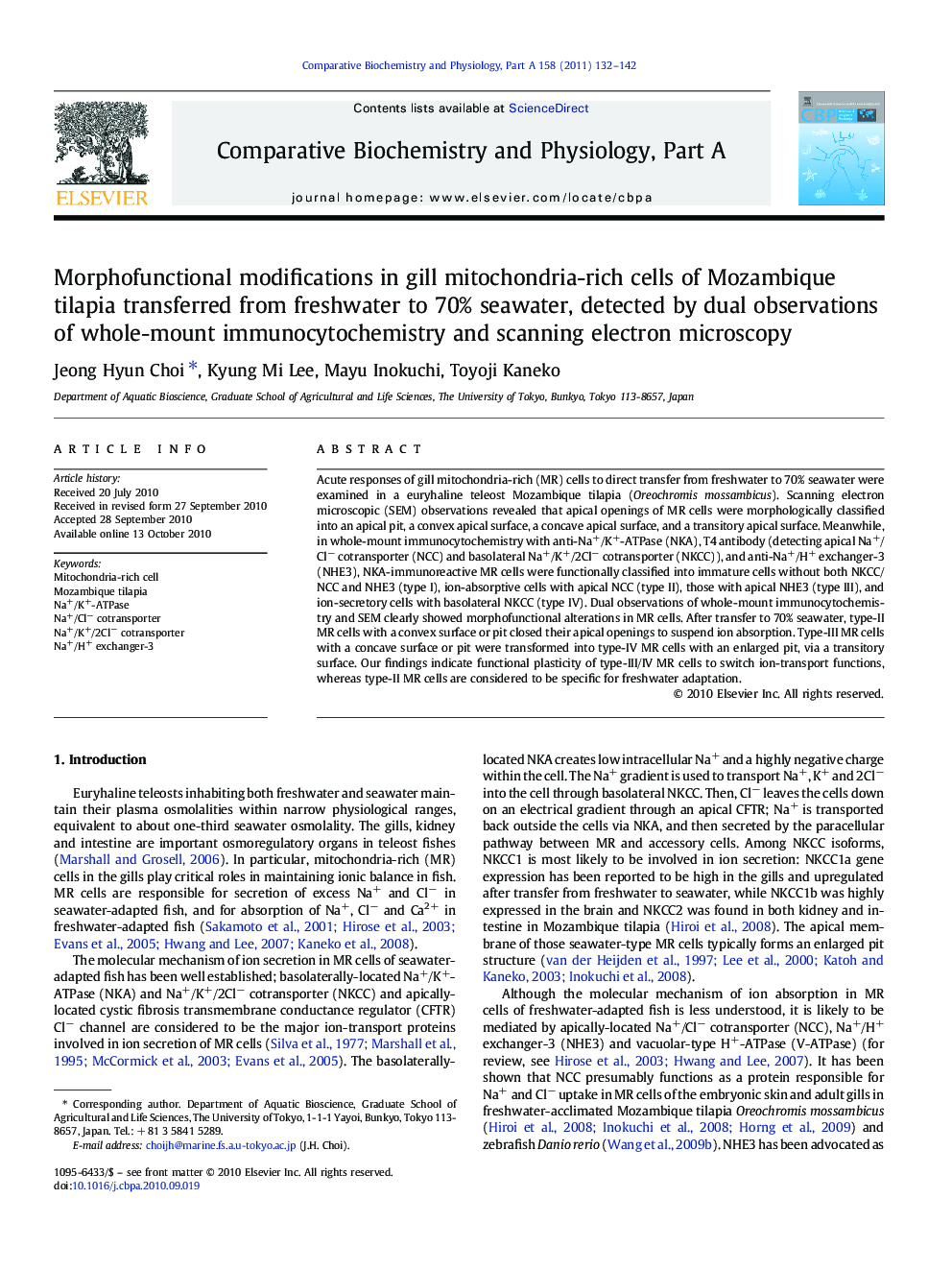| کد مقاله | کد نشریه | سال انتشار | مقاله انگلیسی | نسخه تمام متن |
|---|---|---|---|---|
| 1972896 | 1060299 | 2011 | 11 صفحه PDF | دانلود رایگان |

Acute responses of gill mitochondria-rich (MR) cells to direct transfer from freshwater to 70% seawater were examined in a euryhaline teleost Mozambique tilapia (Oreochromis mossambicus). Scanning electron microscopic (SEM) observations revealed that apical openings of MR cells were morphologically classified into an apical pit, a convex apical surface, a concave apical surface, and a transitory apical surface. Meanwhile, in whole-mount immunocytochemistry with anti-Na+/K+-ATPase (NKA), T4 antibody (detecting apical Na+/Cl− cotransporter (NCC) and basolateral Na+/K+/2Cl− cotransporter (NKCC)), and anti-Na+/H+ exchanger-3 (NHE3), NKA-immunoreactive MR cells were functionally classified into immature cells without both NKCC/NCC and NHE3 (type I), ion-absorptive cells with apical NCC (type II), those with apical NHE3 (type III), and ion-secretory cells with basolateral NKCC (type IV). Dual observations of whole-mount immunocytochemistry and SEM clearly showed morphofunctional alterations in MR cells. After transfer to 70% seawater, type-II MR cells with a convex surface or pit closed their apical openings to suspend ion absorption. Type-III MR cells with a concave surface or pit were transformed into type-IV MR cells with an enlarged pit, via a transitory surface. Our findings indicate functional plasticity of type-III/IV MR cells to switch ion-transport functions, whereas type-II MR cells are considered to be specific for freshwater adaptation.
Journal: Comparative Biochemistry and Physiology Part A: Molecular & Integrative Physiology - Volume 158, Issue 1, January 2011, Pages 132–142